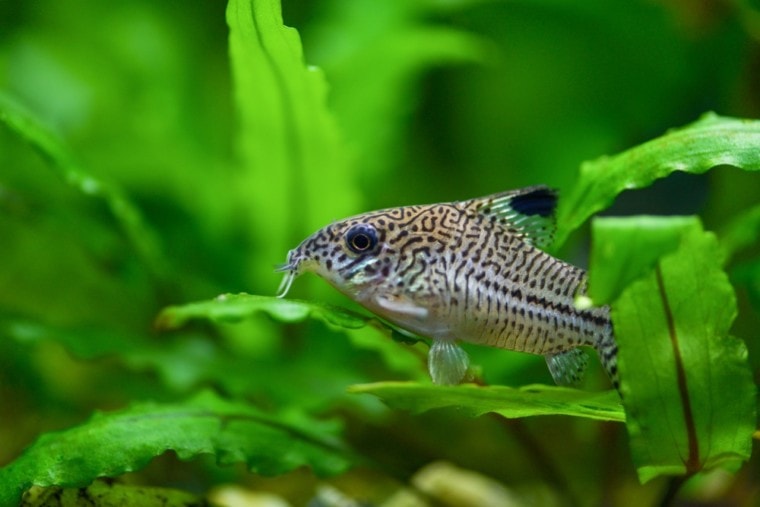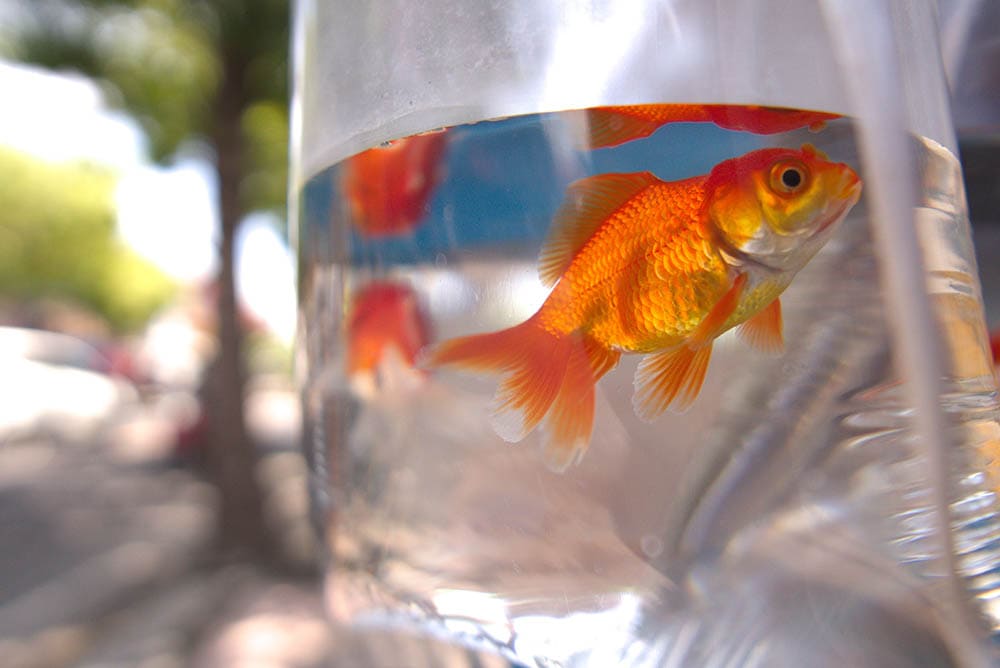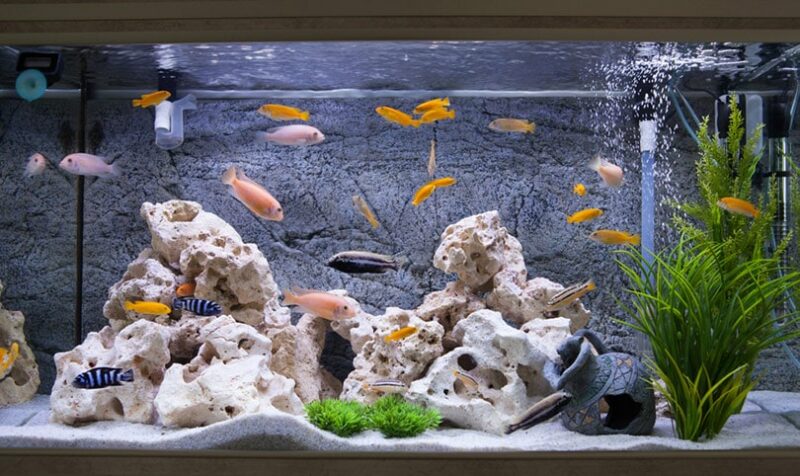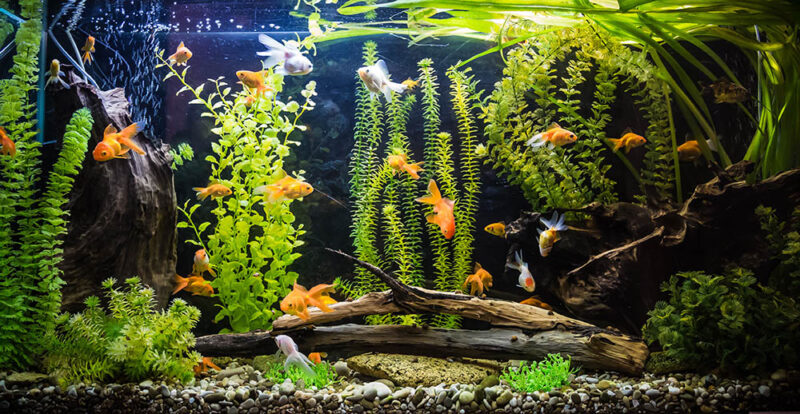
Cory catfish make a great addition to any aquarium. They’re easy to maintain, and most will help keep the bottom of your tank clean. Cories are peaceful fish that cohabitate well, and they are available in many sizes and color patterns. The most difficult part is often choosing which one you want and then finding it.
We’ve found ten different breeds of the Cory catfish that we would like to present to you to help you on your journey to find the perfect fish for your tank. We’ve included pictures as well as some important facts along with each breed to help you learn a little more about them. Join us while we discuss tank size, fish length, color patterns, and more to help you make an informed purchase.
The 10 Most Popular Types of Cory Catfish
These are the ten breeds of Cory fish presented in alphabetical order.
1. Albino Cory

Aquarium enthusiasts created Albino Cory from a darker-colored cory. These fish are pure pink-white and have bright red eyes. They’re a little more sensitive to the light than many other breeds so you will want to add extra vegetation to the aquarium but still provide plenty of room for free swimming at night and in low light conditions. That typically grow to about 2 inches and require a minimum of 10 gallons of water.
2. Bandit Cory

The Bandit Cory is a scaleless fish that is extremely peaceful despite its name. It gets its name from a black band that runs from gill to gill over the eyes of the fish and resembles a bandit’s mask. This breed of Cory requires numerous plants and soft sand to forage for food. Driftwood can provide places to hide, but you need to make sure there’s plenty of swimming room in the tank. This breed also likes dim lighting and grows to about 2 inches as an adult. They also prefer to swim in packs of six or more.
3. Bronze Cory

The Bronze Cory belongs to the Armored catfish family. It has a yellow or pink body and fins with a white belly. It also has a blue or Gray head. The Bronze Cory breed likes a quiet environment and soft, non-abrasive sand. It is one of the few fish that can survive in stagnant water and is capable of breathing air from the surface. In fact, it’s not uncommon to see them doing so in your aquarium, even if it’s well maintained. They will also require at least 10 gallons of water with plenty of space to swim and plenty of hiding spots. Bronze Cory likes to be kept in packs of five or more and can reach a length of three inches as an adult.
4. Emerald Cory

The Emerald Cory has a deep green body with pink highlights in the lower portion. It’s popular in modern aquariums because of its green color, and it’s extremely peaceful and gets along with most other fish. In fact, many experts recommend keeping this breed in packs of 10 or more. It’s great for beginners because it’s not too concerned with water conditions, but they will require a minimum of 20 gallons to swim in and a neutral pH. They are fine in brighter lighting conditions and can reach a length of 3½ inches.
5. Julii Cory

The Julii Cory Is one of the more popular breeds of Cory catfish. This breed is one of the most colorful of all kinds, and they’re very fish so you can add them to any aquarium. Julii Cory likes a large 20-gallon tank with circulating water. They don’t require a lot of planted vegetation, but they do like places to hide, and they usually grow to about 2 inches long.
6. Panda Cory

The Panda Cory is from the rivers of Central and South America. It’s a gold-colored fish with patches of black over the fins and eyes. This breed like so well planted tank so it can hide behind the vegetation. They also like dim lighting and will usually stay hidden within the plant life at the bottom, so it’s important so get non-abrasive soft sand for the aquarium. It cannot tolerate salt in the water. The Panda Cory likes to be in schools of six and is a peaceful fish that avoids confrontation. He usually grows to about 2½ inches as an adult, and only requires a 10-gallon tank.
7. Peppered Cory

Peppered Cory is also known as a Blue Leopard Cory, and it is one of the more popular Cory’s found in the aquarium. Its body is olive or tan and shimmers with an iridescent green in the light. It also has dark green and black markings on its body. You can keep Peppered Cory in tanks as small as 10 gallons, and they like when there are five or more of them to form a school. It would help if you kept plenty of plants and driftwood in the tank so they can have a place to hide, and soft non-abrasive sand that they can forage in without damaging their fins. They can live in a smaller 10-gallon tank and can grow to three inches or more.
8. Pygmy Cory

The Pygmy Cory is a very small breed of Cory that rarely gets above ¾ of an inch when fully grown. They have silvery bodies that shimmer in the light with dark black and green spots. These fish are non-aggressive and often found in the most peaceful aquariums. They will require soft, non-abrasive sand because they stay towards the bottom. They also like to hide behind live plants, so you will need some vegetation in your aquarium, but they are usually content living in a tank as small as 10 gallons.
9. Skunk Cory
The Skunk Cory belongs to the Armored catfish family. Instead of scales, this fish has overlapping plates to provide extra protection from predators. It also has sharp points on its fins and can be quite dangerous to handle without gloves. It’s a bottom feeder that helps keep your aquarium clean and is peaceful enough to cohabitate with any fish. The body is a light creamy white color with a black stripe running down its back hence the skunk name. Alexa planted an aquarium with plenty of free-swimming space. Stone quarries can be housed in an aquarium as small as 10 gallons and can grow to about 2 inches as an adult.
10. Three-Stripe Cory

Three-stripe Cory is one of the most popular types of Cory catfish available. These fish are extremely colorful and sometimes mils labeled as the more expensive Julii Corey in some cases. It’s also known as the Leopard Catfish. These fish have white bodies covered with black spots. There are also large black spots on the dorsal fin.
Three-Stripe Cory fish like soft, non-abrasive sand to rummage in. They will also require plenty of hiding places created by driftwood, plastic castles, etc., for protection. They are tolerant of different water conditions but like a neutral pH and dim lighting. This fish likes to be housed with others of the same breed and can grow to 2½ inches long as an adult.
Summary
Most breeds of Cory fish are easy to maintain and only require a tank with ten or twenty gallons of water to provide enough room to swim. Most are bottom feeders and forage in the sand looking for food, so you need to provide a type of sand that is not abrasive to their fins. Another thing to consider before purchasing a Cory catfish is that many of them prefer to be part of a pack, and most will require 4 to 10 companions to be happy.
If you have learned something new from this short guide and found a fish for your aquarium, please share these ten popular types of Cory catfish on Facebook and Twitter.
Feature Image Credit: Bk87, Shutterstock









